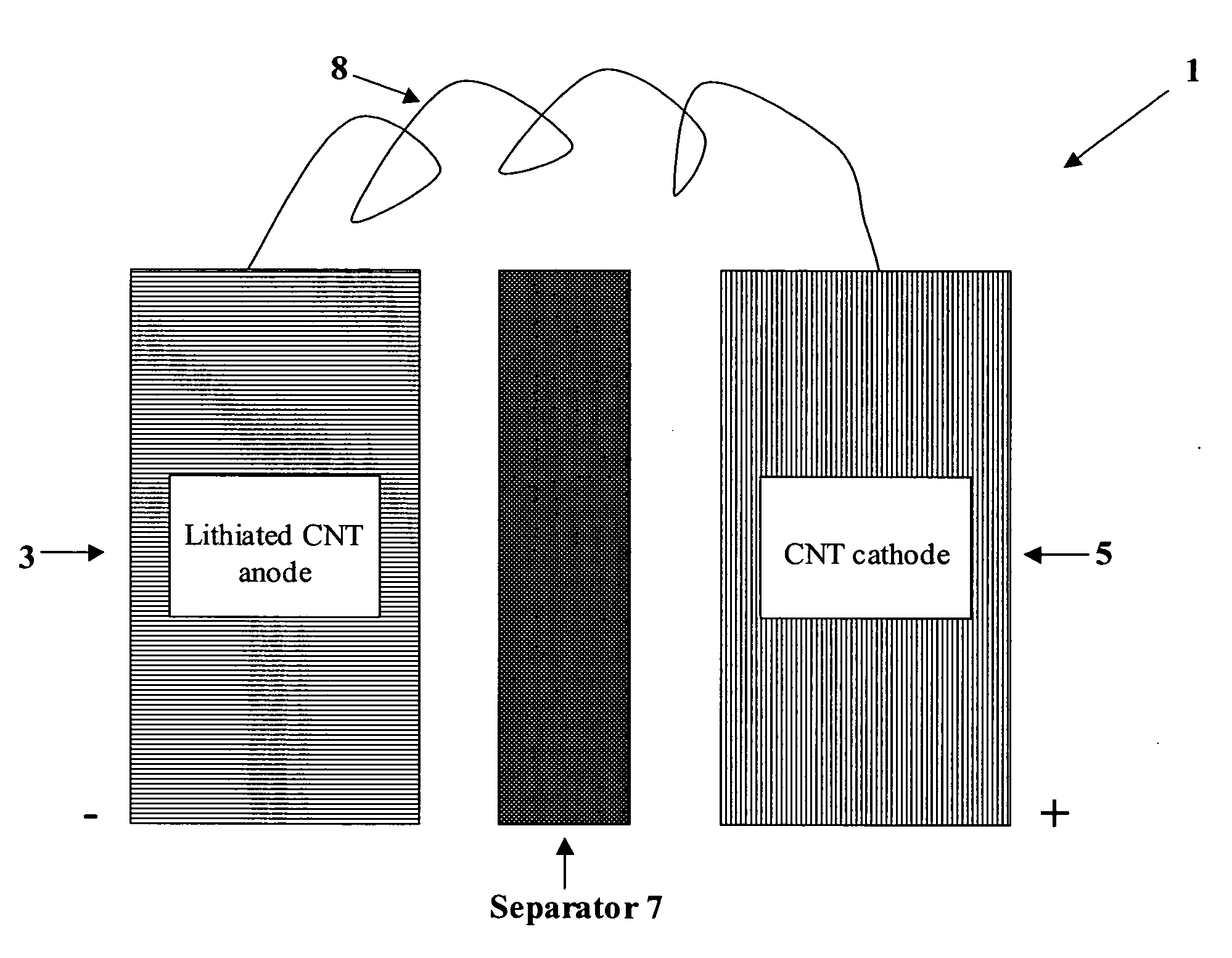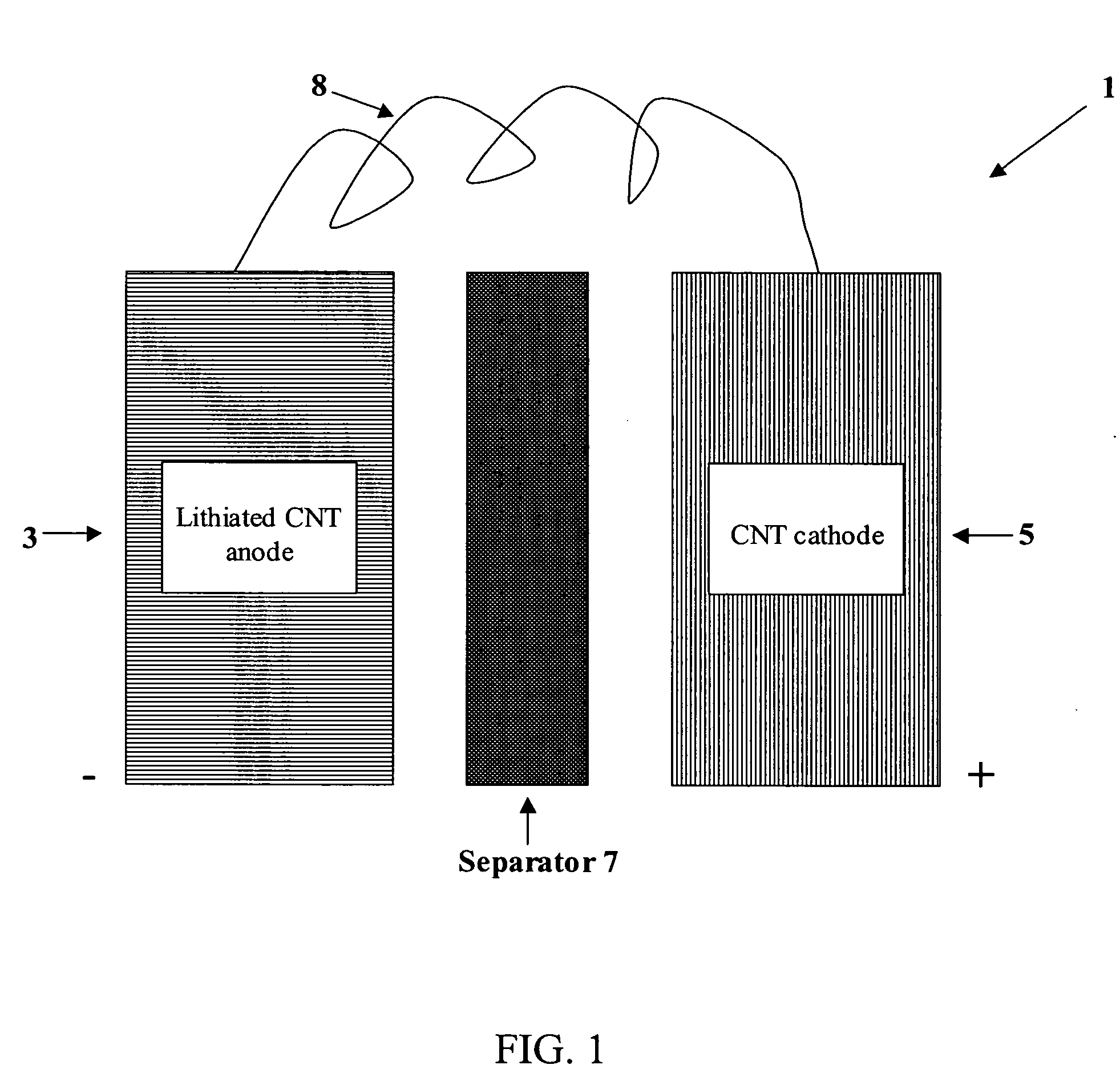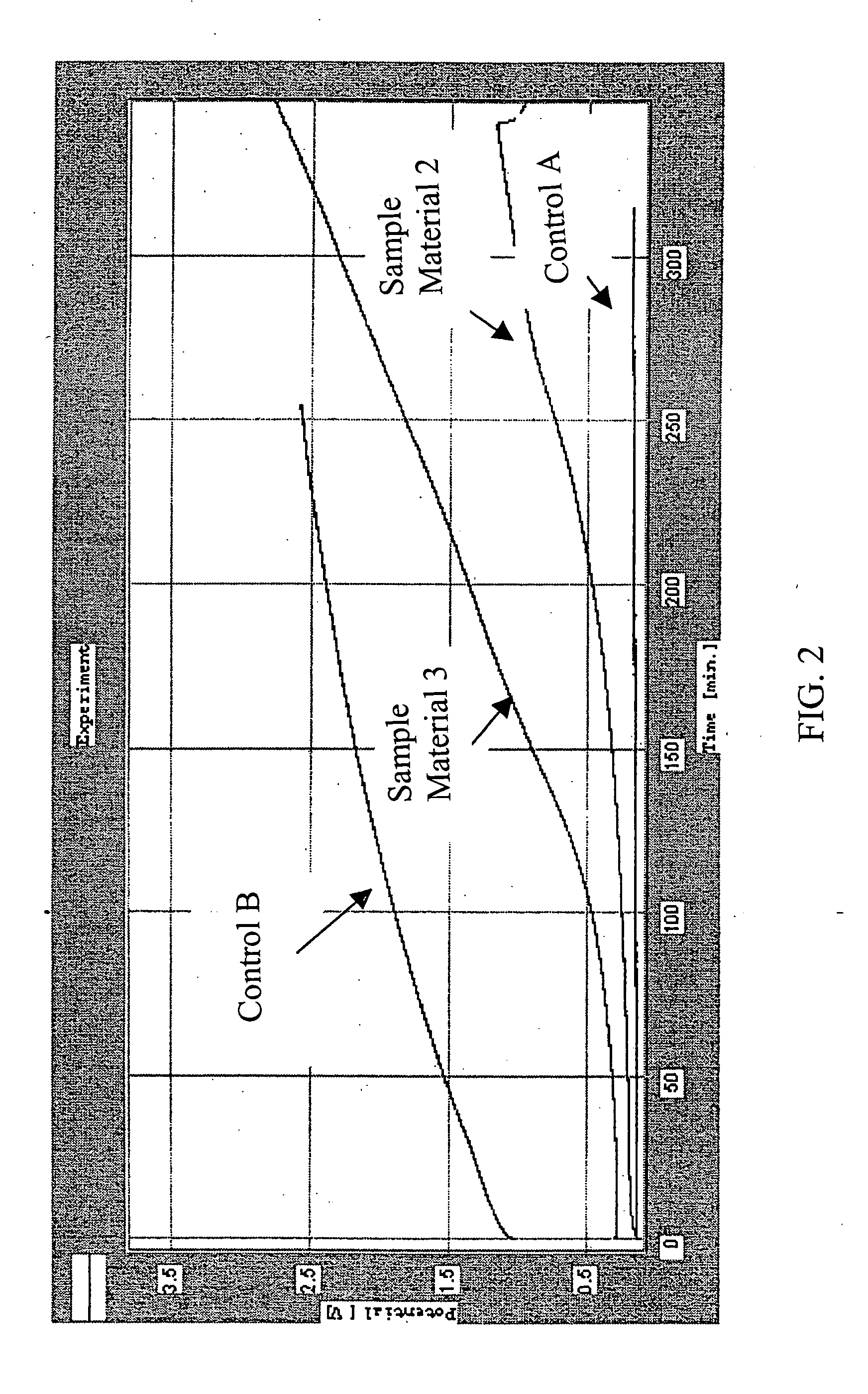Carbon nanotube lithium metal powder battery
a lithium metal powder and carbon nanotube technology, applied in the direction of negative electrodes, cell components, electrochemical generators, etc., can solve the problems of limiting the lithium storage capacity of conventional batteries, inability to provide the practical energy density required to make them a viable alternative to existing rechargeable systems, and inability to meet the requirements of conventional batteries or through extrapolation of the capabilities of conventional systems
- Summary
- Abstract
- Description
- Claims
- Application Information
AI Technical Summary
Benefits of technology
Problems solved by technology
Method used
Image
Examples
examples
Control A:
[0048] First, a control sample, which did not contain CNT, was synthesized. 9.65 g of mesophase carbon microbeads (MCMB) acquired from Osaka Gas Ltd. was mixed with 0.35 g of PEO powder (Aldrich, 5×106 MW). Next, 26.25 g of anhydrous p-xylene (Aldrich) was combined with 0.975 g of Lectro® Max stabilized lithium metal powder (SLMP). This was mixed with an overhead mixer at ˜300 rpm for 5 min. The MCMB / PEO mixture was then sequentially combined with the SLMP in xylene. The resulting mixture was covered with tin foil to prevent solvent loss, heated to about 55° C., and stirred at about 300 rpm for 3 hr. The result was a uniform black slurry which was coated onto a piece of copper foil that had been lightly sanded, degreased with acetone, and dried in the over prior to use. This was allowed to dry on the hot plate in the glove box overnight. A small square of this material was cut out, pressed, and stored in an argon filled ziplock freezer bag when out of the glove box, to p...
PUM
| Property | Measurement | Unit |
|---|---|---|
| specific energies | aaaaa | aaaaa |
| temperature | aaaaa | aaaaa |
| open circuit voltage | aaaaa | aaaaa |
Abstract
Description
Claims
Application Information
 Login to View More
Login to View More - R&D
- Intellectual Property
- Life Sciences
- Materials
- Tech Scout
- Unparalleled Data Quality
- Higher Quality Content
- 60% Fewer Hallucinations
Browse by: Latest US Patents, China's latest patents, Technical Efficacy Thesaurus, Application Domain, Technology Topic, Popular Technical Reports.
© 2025 PatSnap. All rights reserved.Legal|Privacy policy|Modern Slavery Act Transparency Statement|Sitemap|About US| Contact US: help@patsnap.com



